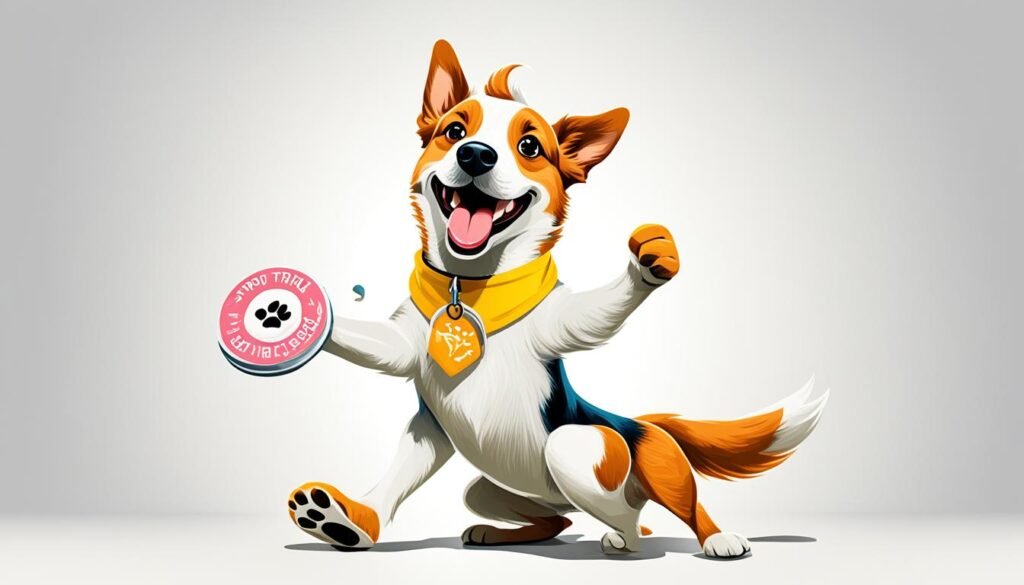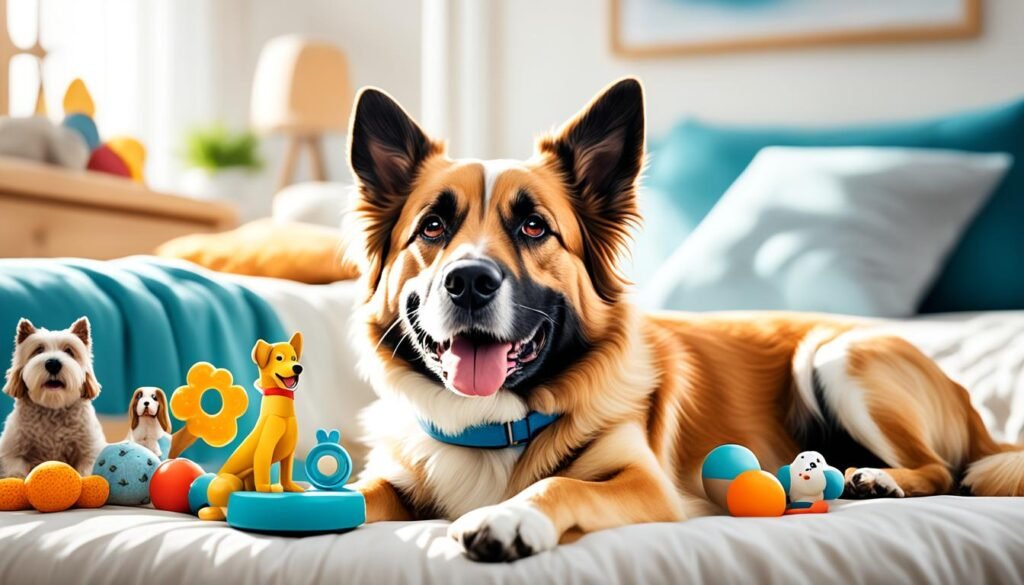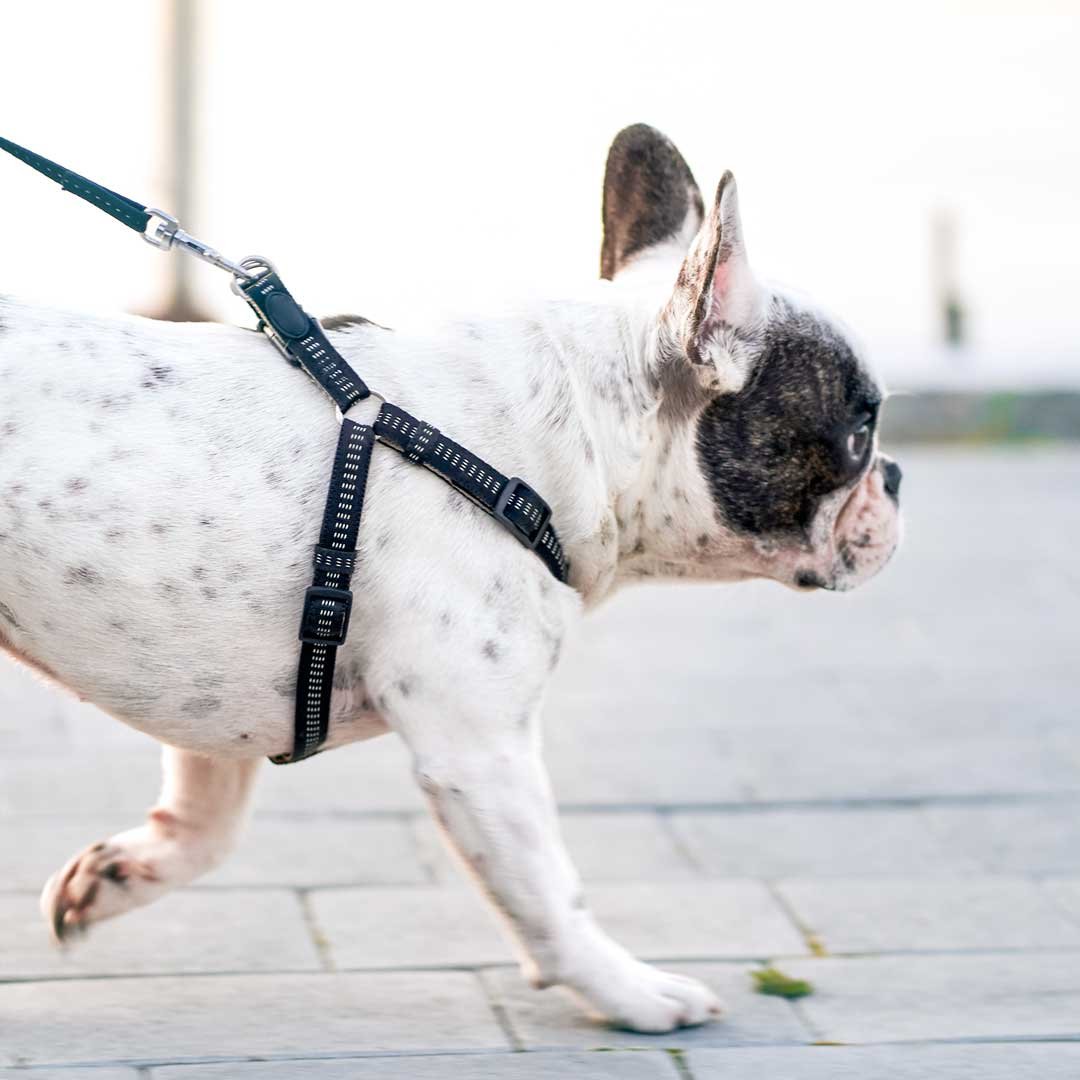A puppy can quickly grow, doubling its birth weight in just a week. They keep growing fast and by 7 to 9 months, they’re almost adult-sized. This time is key for training them well. Matching your training to their age is a vital secret of success, often overlooked.
As they grow, puppies go through big changes. Males can start breeding, and females face their first cycles. Thinking about spaying or neutering is important. It helps avoid surprise litters and manage behaviors early on.
Using the right training now can steer your dog to good behaviors later. Smart puppy training makes them fit in well with your family. Plus, getting your dog fixed alongside training builds a strong, happy bond between you.
Key Takeaways
- Understanding a puppy’s growth cycle is essential for tailored training regimens.
- Early life spay/neuter procedures contribute to better behavior and health outcomes.
- Dog training tips are most effective when aligned with the pup’s physical and sexual maturity.
- Obedience training success depends on recognizing and adapting to a dog’s developmental stages.
- Proper training techniques are key in preventing unwanted behaviors and ensuring well-behaved dogs.
The Critical Period: Understanding Your Puppy’s Developmental Stage
As puppies hit 7 to 9 months old, they’re in a critical growth phase that deeply affects their future behavior and ability to learn. This phase is exciting but can be tricky for pet owners. You will see your puppy change a lot physically and in how they act.
Rapid Physical Growth and Its Impact on Training
Puppies grow quickly during this phase. It’s not just their bodies that change but also how we can train them. They get bigger and stronger, and that means our training techniques need to change too. It’s important to learn how to train them best, considering their size, strength, and mental focus.
The Importance of Spaying or Neutering for Behavior
Getting your puppy spayed or neutered has big health and behavior benefits. It can help cut down on unwanted behaviors and health problems. Plus, it stops them from having puppies of their own. This helps make their behavior better and training easier during this growth stage.
Communication and Body Language in Adolescent Dogs
As puppies grow, the way they communicate changes. It’s important to learn their signals for training and bonding. They start using more obvious body language and sounds to show us what they need or how they feel. Good owners should learn to understand and respond to these signals.
Proper Nutrition for Maintaining Optimum Health and Trainability
Feeding your puppy right is key for their growth, brain development, and how well they learn. A balanced diet helps them stay healthy and active. This health and energy are needed for successful training.
Core Training Philosophies: Positive Reinforcement and Consistency
Dog training success depends on key principles. The positive reinforcement method stands out. It’s not just about treats. It is rewarding dogs to encourage good behaviors. This method uses various rewards to make good actions happen again.
Using a consistent training routine is key. It helps when teaching dogs simple or complex commands. By being consistent, dogs understand what’s expected. This helps them behave predictably.

By using both these approaches, pet behavior improves. Also, the bond between the dog and its owner grows strong. This makes training fulfilling and builds a lasting relationship.
| Training Philosophy | Description | Benefits |
|---|---|---|
| Positive Reinforcement | Rewards the dog for good behavior to make it happen more often. | Makes good behavior more likely, strengthens the bond between owner and dog. |
| Consistency in Training | Regular training using the same methods and rewards. | Helps dogs understand what’s wanted and ensures they behave as expected. |
It’s vital to tailor training to each dog’s needs and learning speed. Being flexible helps improve results. This approach not only teaches new behaviors but also fixes old ones.
Fostering Good Behavior: Strategies to Reduce Whining and Anxiety
To deal with dog whining and canine anxiety, it’s crucial to know their causes. We’ll look at steps to make your dog healthier and better behaved. With these tactics, you and your dog can have a better life together.
Identifying the Underlying Causes of Whining
Whining is a key way dogs communicate. But, it can show they’re upset or not feeling well. You need to figure out why they’re whining.
Practical Techniques for Addressing Attention-Seeking Whines
Sometimes, dogs whine for attention. To stop this, use regular training. Set specific play times and praise your dog when they’re quiet. This kind of training helps with dog mental health and fostering good behavior.
Maintaining Mental and Physical Health for a Calm Companion
Your dog’s health is key to prevent anxiety and too much whining. Give them exercise, fun games, and a set daily life. This will make your dog happier and less anxious, leading to better behavior.

By knowing the reasons for dog whining and using these steps, you can cut down on bad behavior. This will make life better for you and your dog. Remember, being patient and keeping at it is how you succeed.
Advanced Skills: From Obedience to Agility Training
Dog owners who go past the basics explore advanced skills. They use these to bond deeply with their pets, trying more difficult things together. Skills like being a service dog, agility, and off-leash training go beyond just obeying. They bring many benefits for both the dog and their owner.
Service Dog Training Essentials
Service dog training is key for those with disabilities. It helps them live more independently. These dogs learn to do various tasks, from turning on lights to alerting their owner about blood sugar levels. A big part of their training is advanced obedience and focus, which starts early on.
Agility Training: Physical and Mental Benefits for Your Dog
Agility training is a great way to keep dogs fit and alert. It involves them in obstacle courses, which improves their flexibility and mental sharpness. This kind of activity is not only good for them but also fun. It helps prevent bad behaviors that can come from a lack of exercise. Plus, it strengthens the bond between dogs and their owners through teamwork and trust.
Off-Leash Training Techniques and Safety Tips
Off-leash training is vital for owners looking to trust their dog’s actions off the leash. This kind of training relies heavily on verbal commands and helps dogs control their impulses better. It’s important for dog safety and teaches owners how to read their dog’s body language. This way, both can enjoy more freedom safely.







